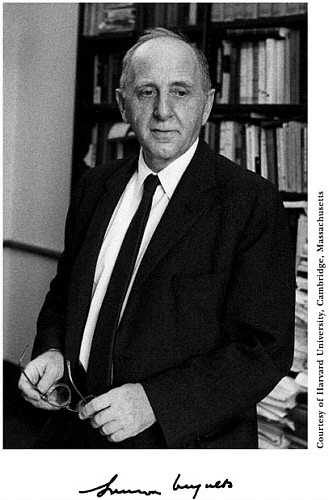Scenario 1: A sexy, red, Lamborghini roars past while you pedal away on your old bike to work. Up ahead at the red light, you see the Lambo sitting there. As you ride up, you peek to see what the driver of this beauty looks like. You notice that the driver is roughly the same age as you. Instantly, your mind starts asking questions. “Where did I go wrong? Where did they go right? Why don’t I have a Lambo?”

Scenario 2: You and several friends decide to travel abroad for spring break. You decide to go to the Dominican Republic, an island off the coast of Florida, known for their beautiful beaches, great weather and, of course, cheap alcohol. Once arriving, there is an obvious difference in the quality of this airport compared to the ones in the United States. Driving along the road to your “all-inclusive” resort, you pass by some of the most impoverished looking areas and people you’ve ever seen. Without trying, your mind begins to wander. “How are they so poor? What went wrong?”
This age-old process of thinking about different levels of perceived success has plagued the human species and is at the heart of economics. Why are some countries, states, groups, communities, and individuals wealthy and prosperous, while others end up dirt poor?
For the economist, getting closer to this answer will likely result in a Nobel Prize. For Simon Kuznets, taking historical data and making sense of it through statistical techniques would prove to uncover some economic truths helping explain these differences in wealth.
The Double-Edged Sword Of Economic Growth
Simon Kuznets won the Nobel Prize in Economic Sciences in 1971 “for his empirically founded interpretation of economic growth which has led to new and deepened insight into the economic and social structure and process of development.” Essentially, he didn’t find the answer to this timeworn question, but asked new and more insightful ones.
Like we do today, he also stood on the shoulders of giants. Joseph Schumpeter, the economist known for coining the term creative destruction, influenced Kuznets’ view on how economies grow. He understood that the introduction of new technologies would spur economic growth, but he also emphasized that these technologies were sometimes very disruptive and could negatively affect growth in other areas. Kuznets points out, “Even if we disregard the threatening exhaustion of natural resources, a problem that so concerned Classical (and implicitly even Marxian) economics, and consider only early urbanization, one major negative effect was the significant rise in death rates as population moved from the more salubrious countryside to the infection-prone denser conditions of unsanitary cities.”
There are large tradeoffs when countries experience growth, because of the inherent aspect of replacing the old with the new. This is one of the main characteristics of growth highlighted by Kuznets, and he called it “structural change.” Sounds familiar?
Today, we are amid an obvious era structural change with the advances in technology. Sure, technology can make industries more productive, but they also displace workers and other industries pushing down productivity in other areas. What happens when autonomous vehicles displace millions of workers in transportation? What happens when your office job gets replaced by an algorithm?
Finding different ways to account for how economies produce and consume stuff is critical to understanding how rich or poor they become. However, Kuznets saw these measurements as tools, but was critical at how effective they are at answering the “why.” He clearly understood that these measurements were leaving out a significant amount of information behind the growth of economies.

“Measure what is measurable, and make measurable what is not so.” — Galileo Galilei
Nonetheless, by looking back at old collected data, he could come up with new methods of measuring how nations make and spend their money, also known as national income accounting. Like previous Nobel laureates, Kuznets took a hard look at the ups and downs of the economy, and saw interesting patterns of lengthy growth periods. He parsed out these periods by large investments in construction and housing. When these large investments were happening, the economy would experience high levels of growth. What that also meant, though, was that there was a bunch of urbanization and movements of people happening as well. These trends are now formally known as “Kuznets cycles” and are commonly referred to in the real estate market, for obvious reasons.
Importantly, Kuznets is known for inventing the term Gross National Product, or GNP. GNP measures the total monetary value of stuff produced by a country’s residents, not including stuff produced by foreign residents even if they are within the country’s border. A more common measure used today is the Gross Domestic Product (GDP) which measures the total monetary value of the stuff produced inside the country’s borders. To put simply, when measuring United States production, GNP measures what an American citizen produces both here and in another country, while GDP measures what all citizens produces inside the U.S.
This new measurement had an incredible impact during World War 2, as it helped incorporate what American citizens were producing overseas for the war effort. Today, globalization is having large impacts on economies of countries all over the world. With the help of “big data”, Kuznets’ GNP measure is back at the forefront with ways in which we can improve how we structure this new, global, modern economy.
Economics is Sexy Because of Kuznets
Kuznets opened a can of worms for economists in the future to dive into when he pointed out that there is more to growth than just bringing in new technologies. How humans adapt to these out-of-the-blue technologies is as important. In his Nobel speech he rightly said, “The significant aspect here is that the surprises cannot be viewed as accidents: they are inherent in the process of technological (and social) innovation in that it contains an element of the unknown.” This insight has become the inspiration for the many economists thereafter, like Daron Acemoglu, for his work on economic and political institutions of countries and Thomas Piketty who has become famous for his work on the income and wealth inequality of countries.
Kuznets is responsible for making economics sexy again, even though he was known for his rigorous advances in quantitative measurement. Despite his understanding of the negative side-effects of growth he was still an optimist. The problems that arise from economic growth are temporary and used to create more growth in the future. The problems will always be there and are necessary to push forward.
“Still, one may justifiably argue, in the light of the history of economic growth, in which a succession of such unexpected negative results has been overcome, that any specific problem so generated will be temporary — although we shall never be free of them, no matter what economic development is attained.”

